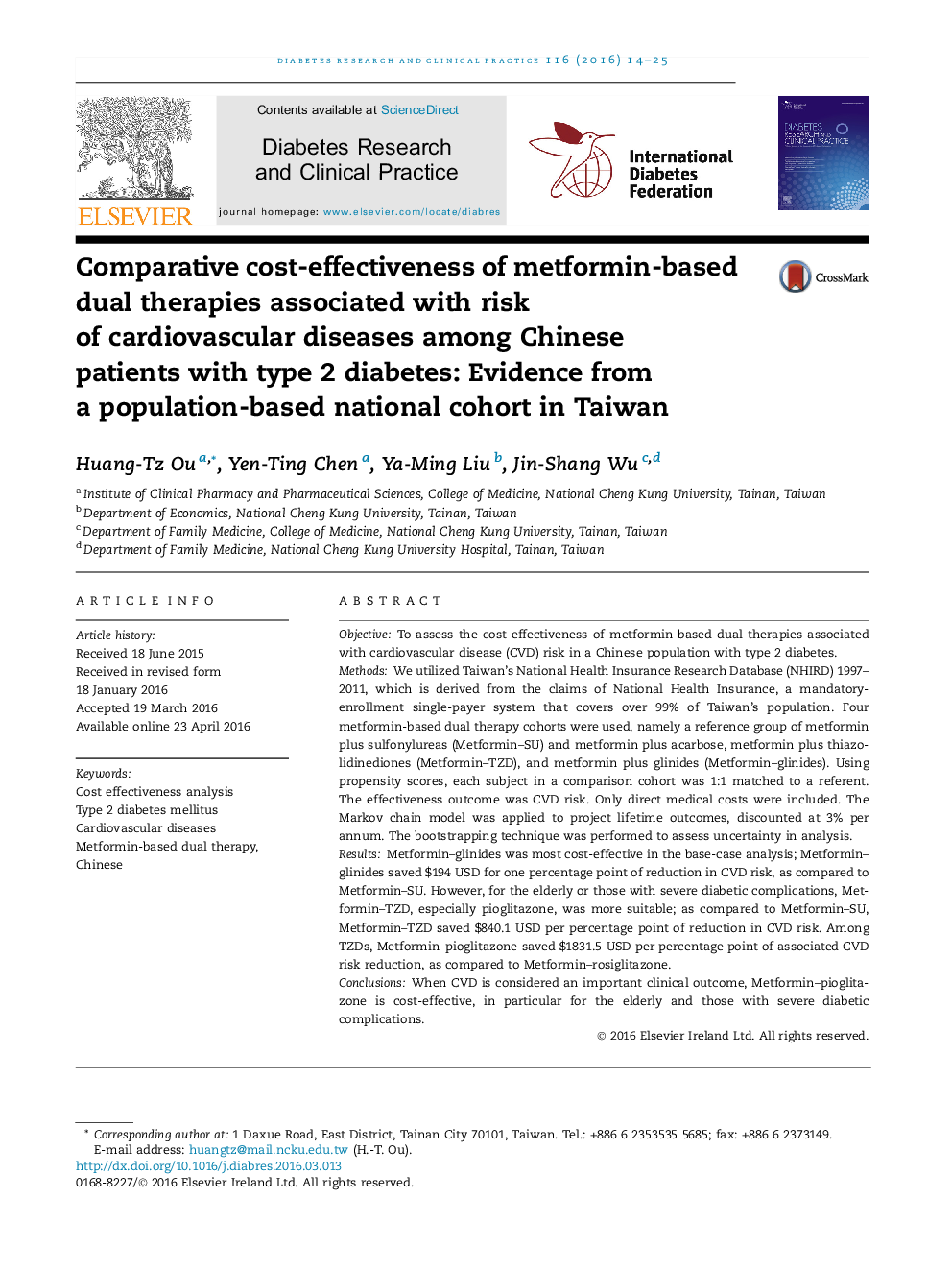| Article ID | Journal | Published Year | Pages | File Type |
|---|---|---|---|---|
| 5898946 | Diabetes Research and Clinical Practice | 2016 | 12 Pages |
â¢Chinese patients with type 2 diabetes using metformin and sulfonylureas dual therapy had relatively higher risk of cardiovascular diseases in the long-run, consequently higher healthcare spending. Among thiazolidinediones, metformin plus rosiglitazone had lower risk of cardiovascular diseases, as compared to metformin plus pioglitazone.â¢In the present conditions in Taiwan, for cardiovascular disease risk, cost-effectiveness analysis indicated that metformin plus glinides was least expensive and most effective, while metformin plus pioglitazone may be more cost-effective especially for the elderly or those with severe diabetic complications.
ObjectiveTo assess the cost-effectiveness of metformin-based dual therapies associated with cardiovascular disease (CVD) risk in a Chinese population with type 2 diabetes.MethodsWe utilized Taiwan's National Health Insurance Research Database (NHIRD) 1997-2011, which is derived from the claims of National Health Insurance, a mandatory-enrollment single-payer system that covers over 99% of Taiwan's population. Four metformin-based dual therapy cohorts were used, namely a reference group of metformin plus sulfonylureas (Metformin-SU) and metformin plus acarbose, metformin plus thiazolidinediones (Metformin-TZD), and metformin plus glinides (Metformin-glinides). Using propensity scores, each subject in a comparison cohort was 1:1 matched to a referent. The effectiveness outcome was CVD risk. Only direct medical costs were included. The Markov chain model was applied to project lifetime outcomes, discounted at 3% per annum. The bootstrapping technique was performed to assess uncertainty in analysis.ResultsMetformin-glinides was most cost-effective in the base-case analysis; Metformin-glinides saved $194 USD for one percentage point of reduction in CVD risk, as compared to Metformin-SU. However, for the elderly or those with severe diabetic complications, Metformin-TZD, especially pioglitazone, was more suitable; as compared to Metformin-SU, Metformin-TZD saved $840.1 USD per percentage point of reduction in CVD risk. Among TZDs, Metformin-pioglitazone saved $1831.5 USD per percentage point of associated CVD risk reduction, as compared to Metformin-rosiglitazone.ConclusionsWhen CVD is considered an important clinical outcome, Metformin-pioglitazone is cost-effective, in particular for the elderly and those with severe diabetic complications.
